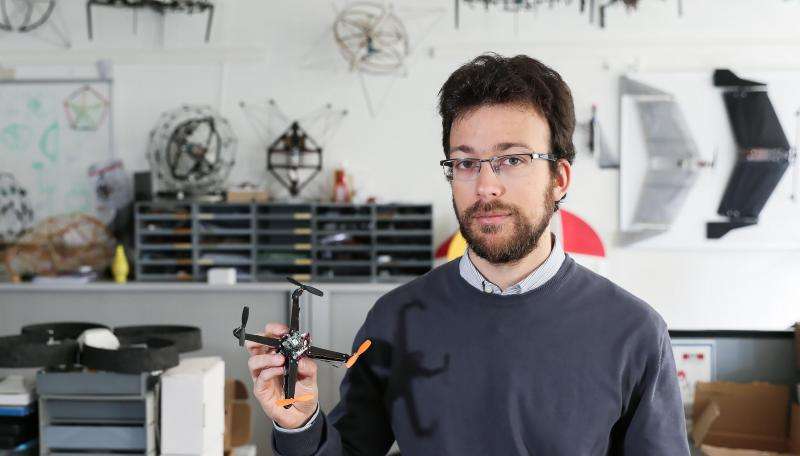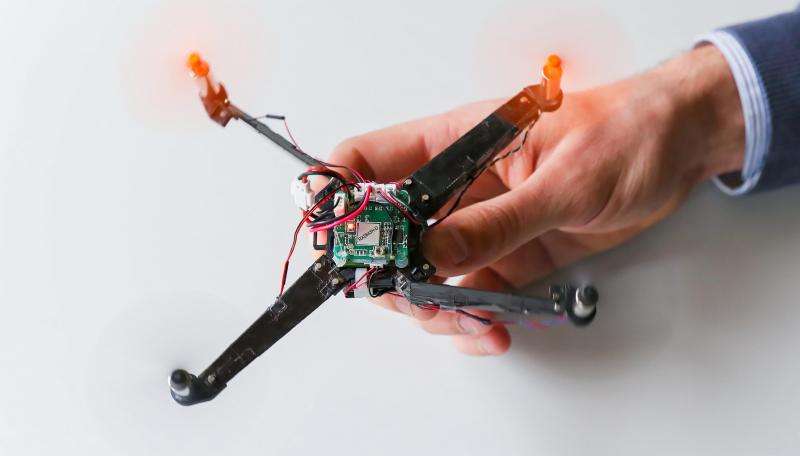A folding drone that's ready for takeoff in a snap

Thanks to the power of its rotors, this fold-up quadrotor extends its articulated arms and takes off in a fraction of a second. This prototype will be viewed by specialists on May 25 at the International Conference on Robotics and Automation in Seattle.
Inspired by origami, the folding drone developed by a team at EPFL and NCCR Robotics unfurls and takes off in a third of a second. The moment it is turned on, the rotors engage, the articulated arms extend and the drone begins moving. This eager device could be quickly released in large numbers over a disaster zone in order to bring back photos and establish contact with people in need.
Using the power of the rotors
The arms, made of fibreglass and light inelastic polyester, fold up into the shape of a trapezoid. When not in use, they wrap horizontally around the body of the device. What sets this device apart is the ability of the arms to unfold by themselves: the force generated by the rotors causes the arms to move into place. The rotors turn in the same direction, causing the arms to rotate out the opposite way and open around two vertical folds. When the arms are fully extended, their upper section moves horizontally and locks the segment open. Small magnets hold everything in place.
For a quadrotor to maintain stability while in flight, two rotors diagonally across from each other need to turn clockwise while the other two spin anticlockwise. The drone must therefore reverse the spinning direction of two of the rotors before taking off. This action takes place automatically in under 50 milliseconds once a sensor has detected the arms have locked into place. This ingenious system has been patented and will be shown on 25 May at the International Conference on Robotics and Automation in Seattle, which will bring together some 2,000 robotics specialists.
Natural stiffness
This quick-starting drone, while simple in appearance, is made up of a number of well-thought-out parts. The stiffness of the arms, for example, is critical to the quadrotor's manoeuvrability. If these parts were flexible, they could bend and vibrate while in flight, causing instability and reducing the quadrotor's response time to external commands. Stiffness in the arms is a key factor for folding, and by spreading out horizontally the arms avoid imbalances caused by the laws of gravity. There is no need for an additional reinforcing mechanism, which would add to the weight of the device.
One advantage of this design is that it's reversible. "This prototype still needs to be folded by hand, but it takes less than 10 seconds for someone with practice," said the device's designer, Stefano Mintchev, who is already planning a version that folds up on its own.

Future efforts will focus on fine-tuning. This includes further reducing the weight so larger models can be developed, and strengthening the arms so they can withstand crashes. The principle of origami folding as applied by the Laboratory of Intelligent Systems, headed by Dario Floreano, could very well be applied to other types of flying devices in the form of wings, a protective cage or other innovations.
Provided by Ecole Polytechnique Federale de Lausanne





















